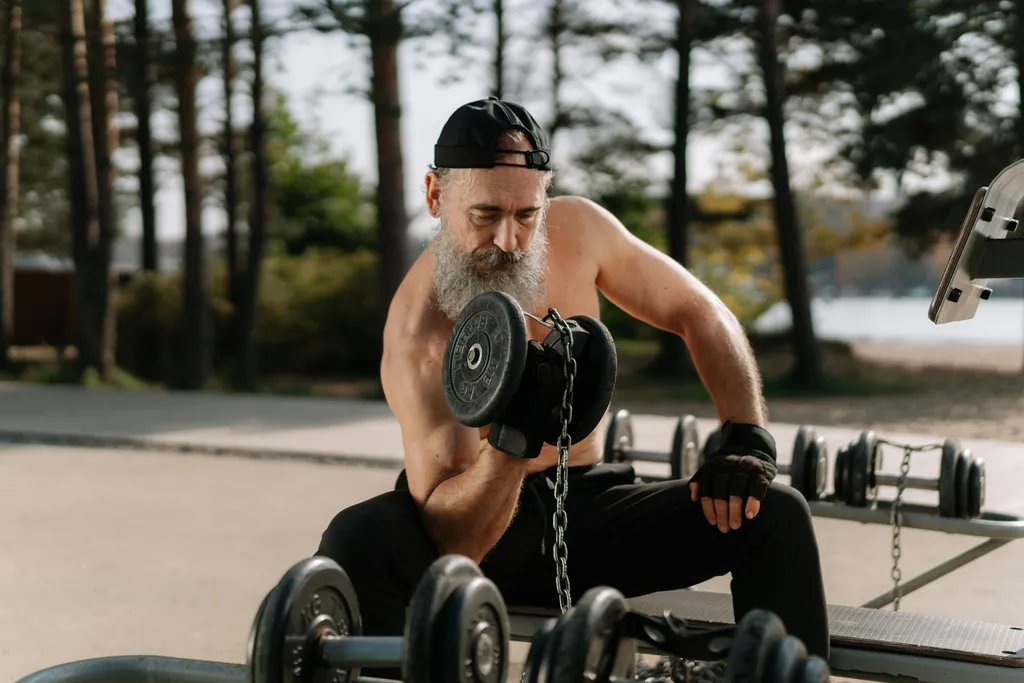Unlock Stronger Bones for Life with Weight Training!
Discover the key to lifelong bone strength! Learn how weight training boosts bone density at any age. Read now for stronger, healthier bones!

The natural aging process leads to a gradual decline in bone mass, with an average loss of approximately 1% per year after the age of forty. For millions each year, this deterioration progresses into osteoporosis, a condition marked by increased bone fragility and a heightened risk of fractures.
The application of controlled resistance through weight training encourages bone adaptation, promoting increased density and resilience. This adaptation plays a significant role in minimizing fracture risk, particularly in later years. Establishing a structured strength-training routine—beginning with two sessions per week that engage the entire body—supports the development of stronger, more resilient bones over time.
Developing muscular strength, achieving definition, and enhancing physical fitness are common goals for those who engage in regular weight training. However, a significant yet often overlooked benefit extends beyond visible results. Strength training serves as one of the most effective methods for fortifying bones, promoting long-term skeletal health and resilience.
“Six out of 10 people who break a hip never fully regain their former level of independence.”
Harvard Medical School
For years, conventional wisdom—shaped in part by widespread marketing—positioned calcium intake as the key to strong bones. However, large-scale studies indicate that while calcium supplementation may provide a modest boost in bone density, it does not significantly reduce fracture risk.

In contrast, resistance training offers a far greater impact. The stress exerted on bones during movements such as squats, presses, deadlifts, and other weight-bearing exercises activates osteoblasts, the cells responsible for bone formation. These cells accelerate the production of collagen, specialized proteins, and hydroxyapatite—the primary mineral in bone—ultimately increasing skeletal strength. As a result, bones adapt by becoming denser and more resistant to fractures.
This adaptation is critical, as bone mass naturally declines with age. On average, a 1% loss occurs annually after forty. For millions, this gradual weakening leads to osteoporosis, a condition in which bones become so fragile that even minor stressors, such as bending or coughing, may cause fractures. Each year, two million osteoporosis-related fractures occur, often leading to long-term impairment.
While aerobic activities like walking, jogging, swimming, and cycling provide significant health benefits and are commonly recommended for older adults, they lack the same bone-strengthening effects. Additionally, activities like walking, jogging, and cycling can pose a fall risk for those with already weakened bones. By contrast, weight training remains one of the most effective methods for maintaining bone density and long-term skeletal resilience.
Strengthening the Skeleton
A structured weight training program—beginning with two sessions per week, incorporating full-body exercises performed at a manageable resistance on fixed machines, and progressing to heavier loads with fewer repetitions using free weights—supports the development of stronger, more resilient bones.
This skeletal reinforcement can occur at any stage of life, though the most significant benefits emerge early on. As noted by a team of endocrinologists in 2018:
“While there is no clear evidence from life-long studies, it is suggested that adaptations to mechanical loading in youth are translated to greater bone strength over a lifetime. Bones become less sensitive to mechanical loading after skeletal maturity is reached at 18 to 25 years of age.”
While muscle mass fluctuates over time, bones have the potential to maintain their strength for a lifetime.

https://pubmed.ncbi.nlm.nih.gov/30513557
Abstract
The prevalence of chronic diseases including osteoporosis and sarcopenia increases as the population ages. Osteoporosis and sarcopenia are commonly associated with genetics, mechanical factors, and hormonal factors and primarily associated with aging. Many older populations, particularly those with frailty, are likely to have concurrent osteoporosis and sarcopenia, further increasing their risk of disease-related complications.
Because bones and muscles are closely interconnected by anatomy, metabolic profile, and chemical components, a diagnosis should be considered for both sarcopenia and osteoporosis, which may be treated with optimal therapeutic interventions eliciting pleiotropic effects on both bones and muscles. Exercise training has been recommended as a promising therapeutic strategy to encounter the loss of bone and muscle mass due to osteosarcopenia.
To stimulate the osteogenic effects for bone mass accretion, bone tissues must be exposed to mechanical load exceeding those experienced during daily living activities. Of the several exercise training programs, resistance exercise (RE) is known to be highly beneficial for the preservation of bone and muscle mass. This review summarizes the mechanisms of RE for the preservation of bone and muscle mass and supports the clinical evidences for the use of RE as a therapeutic option in osteosarcopenia.
